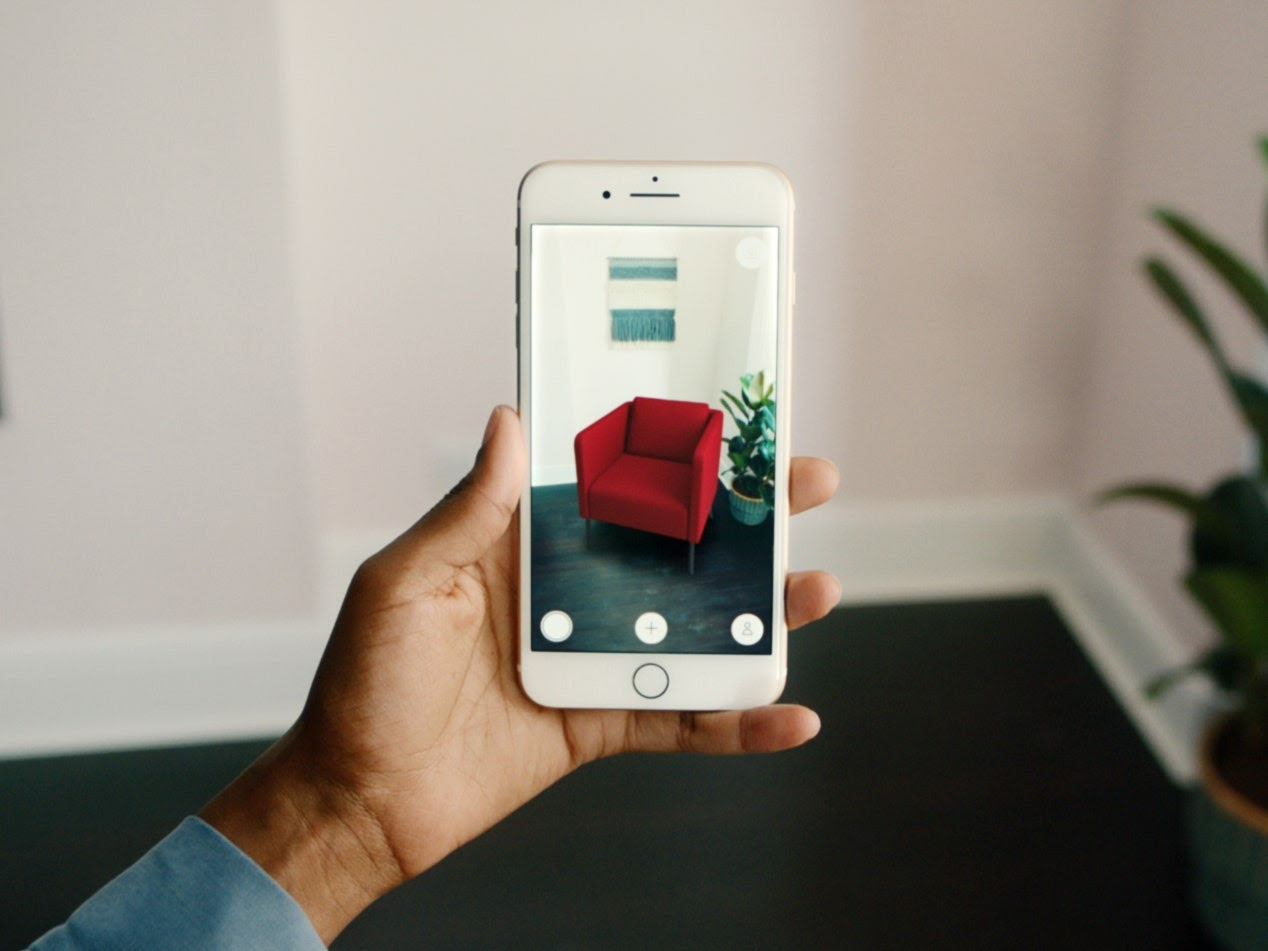The coronavirus pandemic has made consumers more judicious about leaving their homes, which means e-commerce is more important now than ever before. Consumers are shopping with purpose, often doing research online before stepping foot into a store. With augmented reality (AR) technology, consumers can browse for furniture and, using their mobile devices, visualize what that sofa, lamp or piece of art will look like in the room it is destined for.
How It Works
Often confused with virtual reality, which is an entirely immersive digital experience, AR layers digital elements on top of real-world settings, allowing users to visualize their current reality in a new way. The technology has been used in a number of applications, from manufacturing to video games, but it has proven to be especially effective in online furniture applications. In fact, according to a study by Centric Digital, 60 percent of online furniture shoppers want to shop using AR.
“There are a number of hesitations a consumer has when they’re buying furniture,” says Ben Houston, Founder and Chief Technology Officer of Threekit, a product configuration and visualization tool. “One is, ‘Will that color look good with my other furniture?’ The next one is if it’s going to fit.” AR technology can help with both of these.
An added benefit of allowing customers to visualize their furnishings in their spaces is that returns are minimized, since the customer already has an idea of how the pieces will look and fit in their homes. This cuts down on the time and cost of the logistics involved in returning product. And in the time of COVID-19, eliminating a return means one fewer in-person interaction.
Getting Started
In the past, a retailer would have to use an outside app to allow consumers to take full advantage of AR capabilities. Today, it can be built directly into their websites, eliminating the need for another download. The process starts with digitizing your product line.
“lt usually starts with creating a virtual representation of your line of furniture,” Houston says. “That can come from the CAD model or your designers can make them, or it can be provided via third party.”
A number of third-party vendors exist to help in this digitization process, which often can be simpler and less costly than completing the work in-house, particularly if your staff lacks the technical know-how for generating these models.
For retailers who are hesitant to dive into the technology with their entire inventory, Houston suggests starting small.
“Start with where you think you’re going to have the most return on investment,” he says. “Maybe do one product line first and then check your ROI.”
Houston says that as this technology continues to evolve, it will only get smarter and enable customers to make more informed decisions about their furniture purchases. Home furnishings retailers should get on board now because consumers will soon come to expect the feature when shopping for furniture online.
“I think AR is just going to be table stakes or just expected for furniture retailers, and it’s just going to look better and better,” Houston says. “There will be a very interesting future that’s going to arrive. It’s hard to say when, but it’s quite likely that you’ll be able to scan your room using your phone and it may be able to make recommendations. I do think there’s going to be some really interesting concierge opportunities with this technology.”
A number of third-party vendors exist to help retailers integrate augmented reality tools into their existing websites. Here are three we found.
Threekit
In addition to augmented reality, Threekit offers a 3-D product configurator to give customers the full view of a product. The Virtual Photographer tool lets customers visualize a product’s custom options, such as different fabrics, colors or patterns.
Designhubz
Providing the augmented reality tools for retailers like IKEA, Designhubz works with retailers to convert their physical inventory into 3-D models and AR visualizations. The company also offers virtual try-on tools for fashion accessories.
Seek
Seek is a web-based platform that can handle large-scale augmented reality applications. The company’s team can work with a retailer’s existing 3-D models or create them from standard 2-D images and dimensions.
www.seekxr.com







